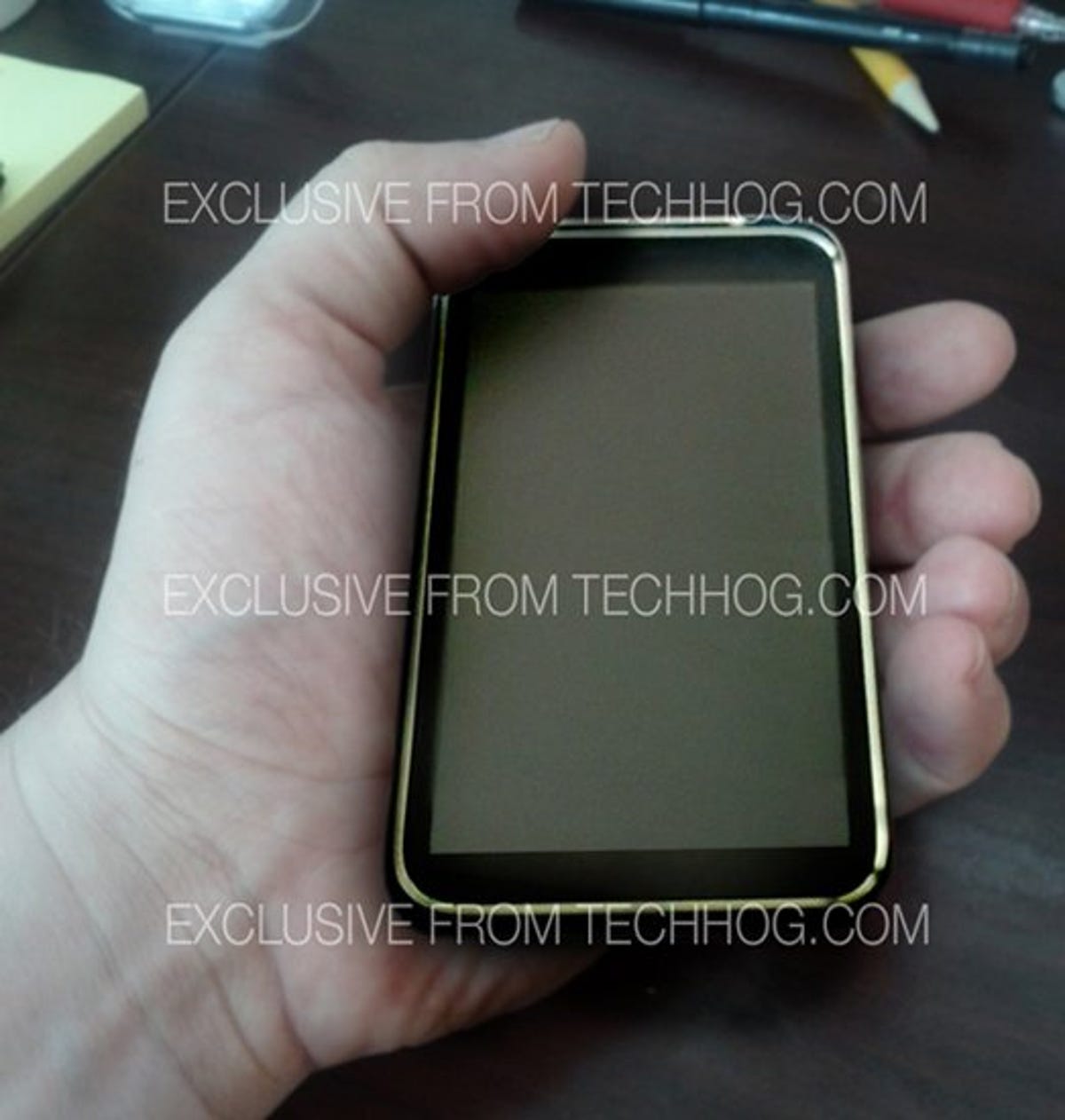
TechHog
Over the weekend, tech Web site TechHog posted, and subsequently removed, what might be the first look at the third Nexus handset.
The image showed a phone that had no carrier branding or logo, but the speaker at the top resembled recent HTC models. As BGR points out, the image has a little bit of Photoshop trickery and may not be an actual device. However, TechHog has since posted a different, albeit similar image of a phone. The difference here is that there now appears to be room for buttons across the bottom, possibly something that lights up when the phone is powered on.
If there’s one thing I’ve learned covering Android for more than three years now it’s that smoke often means fire. More often than not, Android rumors eventually pan out, and my gut tells me this could be the third Nexus handset. Toss in the fact that the tech blog was asked to take the post down, and this feels more right than wrong.
The actual hardware (processor, memory, storage) still remains a mystery, although Android and Me believes it might include an Nvidia Tegra 3 “Kal-El” platform. On a recent earning call, the chipmaker said it has been working “very closely with Google on Ice Cream Sandwich” and looks forward to the release. The timing for a multicore release also lines up perfectly for the end of the year, and it would certainly be a noteworthy industry first.
Considering we’re half a year into the Nexus S, I fully expect that work has begun for its successor. Call it Nexus 3, Nexus 3D, or Nexus Prime, it’s pretty much a given that Google and pals are readying the next benchmark device.
It really wouldn’t surprise me to see Google and a hardware maker announce something as ambitious as a phone without buttons. That would instantly set it apart from anything else on the market and could show off a revolutionary user experience. We’ve heard plenty about how Ice Cream Sandwich will mesh Honeycomb and Gingerbread features so it makes sense to see a phone without buttons. As evidenced in the Motorola Xoom and Galaxy Tab 10.1, we see that neither physical nor capacitive buttons are necessary for navigation.
What are your thoughts on a multicore handset that may not have any buttons?



